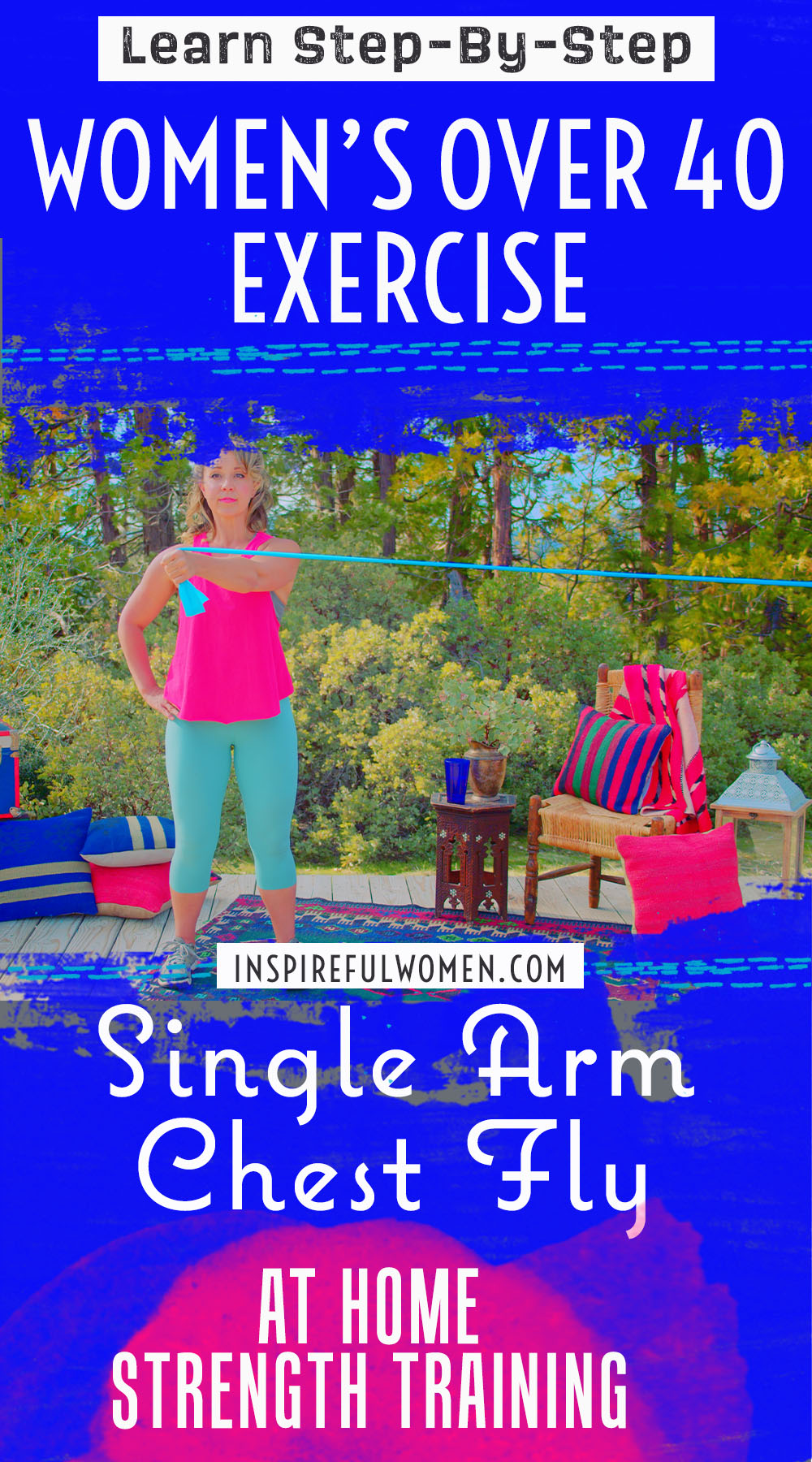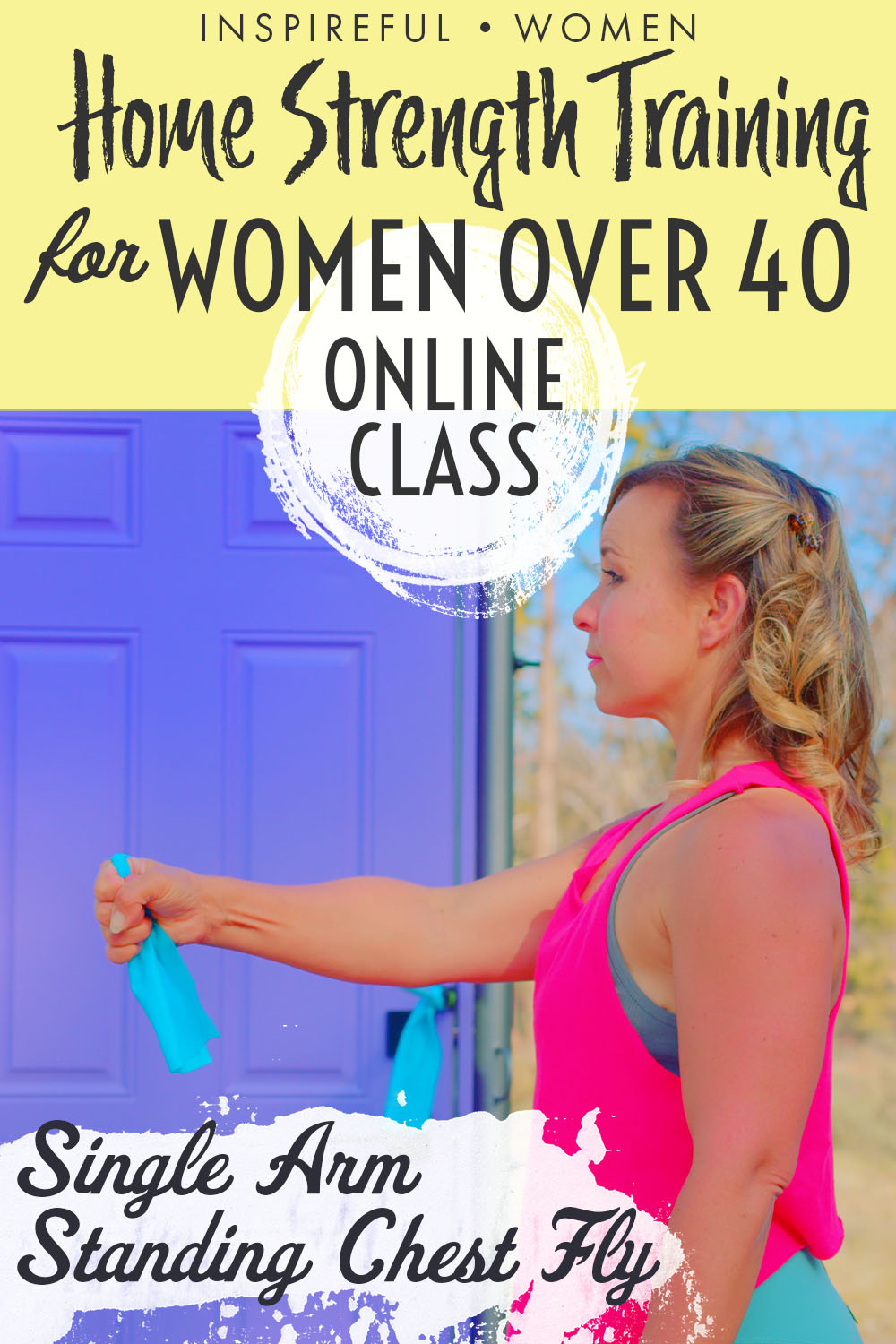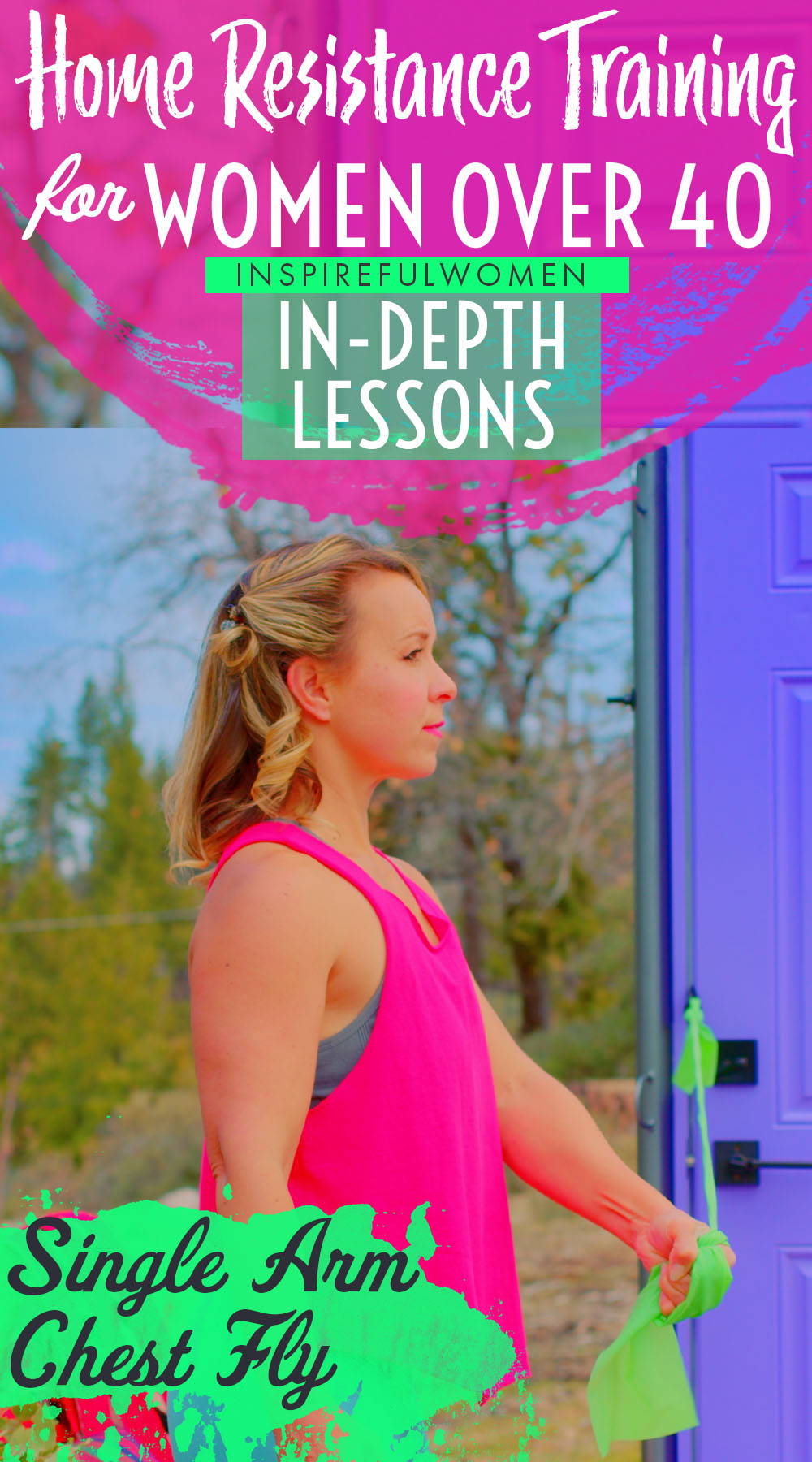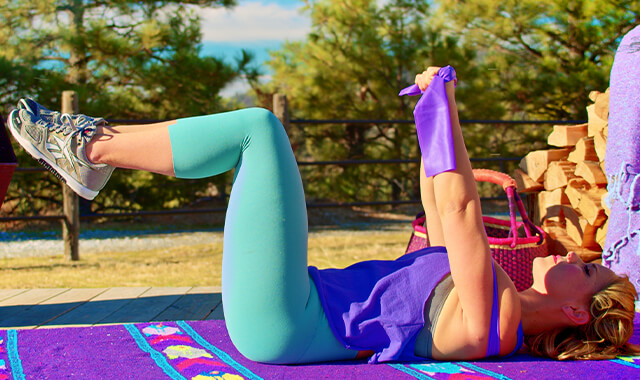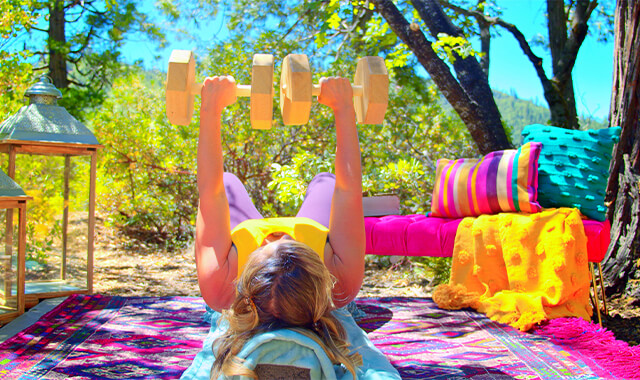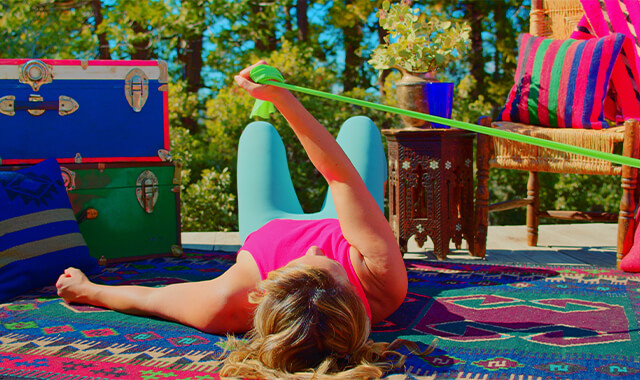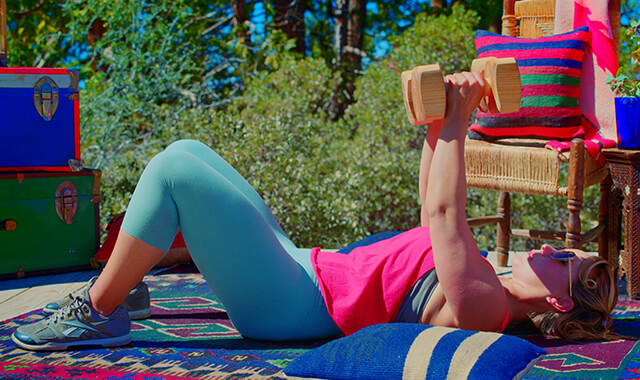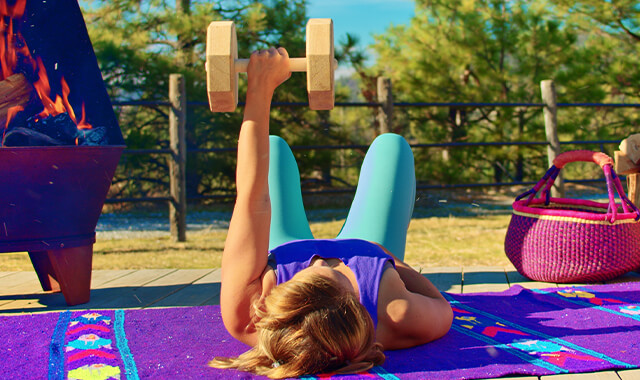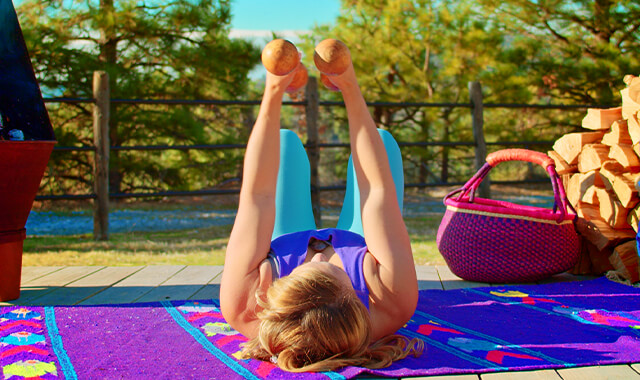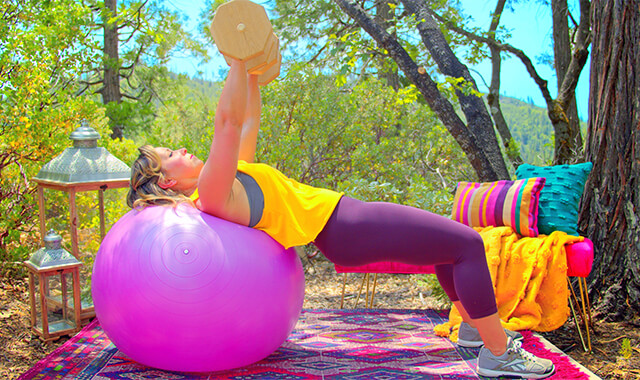Single Arm Standing Band Chest Fly
How to Do the Standing Single Arm Cable Chest Fly Alternative w/ Band | In-Depth Guide [VISUAL LEARNERS] Beginner
Proper Form, Common Mistakes, & Variations | Home Resistance Training
WHAT DO YOU WANT TO SEE?
QUICK DEMO
QUICK DEMO
MUSCLES THIS WORKS
MUSCLES
MAIN MUSCLES WORKED IN the Single Arm Standing Band Chest Fly
PECTORALIS MAJOR
OTHER MUSCLES WORKED:
- Coracobrachialis
- Anterior deltoid
STARTING POINTERS
Starting Pointers
WHAT WE'RE DOING TODAY
ALL WE'RE DOING:
With a straight arm out to your side holding the band, bring your arm to the front of you.
Resistance bands are a great substitute to cable machines for performing chest flys. Not only can you perform this cable chest fly alternative anywhere, but you can also adjust the resistance bands to match your fitness level. This is a highly effective exercise for targeting the chest muscles and improving upper body strength, flexibility, and muscle balance.
The single-arm version allows you to move the arm through a larger range of motion - not just bringing the arm to midline (of the chest) but crossing over midline.
This exercise does work the core muscles because it is in a standing position. Working one arm at a time does not require as much core strength as working both arms at the same time, and will activate the core muscles on the sides of the torso (obliques and quadratus lumborum) to prevent the torso from side bending or rotating.
HOW TO DO THE EXERCISE
LOOKS
HOW Single Arm Standing Band Chest Flys SHAPE OUR BODY
Tones and defines the chest muscle.
PROPER FORM
PROPER FORM: Single Arm Standing Band Chest Flys
EQUIPMENT, SETS & REPS
EQUIPMENT
Main set (3: Light/Med/Heavy)
X-Heavy Band (I recommend getting this too if you plan to use resistance bands frequently).
SUGGESTED STARTING WEIGHT FOR WOMEN:
Moderate resistance.
SETS & REPS:
2 sets of 8-10 reps.
PACE:
Bring the arm in a moderately quick, slow return to the starting position.
BODY POSITION
BODY POSITION FOR THE Single Arm Standing Band Chest Fly
BAND: The band is anchored at the mid-chest level. Stand with the anchor to your side. Hold the end of the band with your hand that is closest to the anchor.
FEET: Parallel stance, shoulder width apart, toes pointed forwards.
BODY STANCE: Neutral spine (includes neck), sternum lifted. Knees bent slightly. Shoulder blades in and down the back and your chest wide. Hips and shoulders squared to the front.
ARMS: Arm out to the side, just lower than shoulder level (abducted approximately 70 degrees). Your arm should be in line with your torso, or slightly in front, but not behind. Elbows slightly (10 degrees) bent. Sidestep out until there is tension in the band. There should be a straight line from the band anchor, through the band, down your arm to both shoulders. If it is more comfortable you can angle your arm forward (sometimes having your shoulder straight out to the side can be uncomfortable).
HAND/GRIP: Neutral grip (with your arm out to the side and abducted, your thumb is pointed up).
HOW TO DO
HOW TO DO Single Arm Standing Band Chest Flys
CUE: Keep your weight evenly distributed on both feet as your arm is pulled in - (don’t allow the band to pull you to the working side, and don’t lean your body away from the anchor).
Pull your upper arm in towards the midline of your body. Keep your elbow in the same position.
Pull as far across your midline as is comfortable (and controlled).
Pause at the end of the movement.
Slowly move your arm back out to the side.
HOW TO SAFELY GET OUT OF THE EXERCISE
From the starting position, release the band.

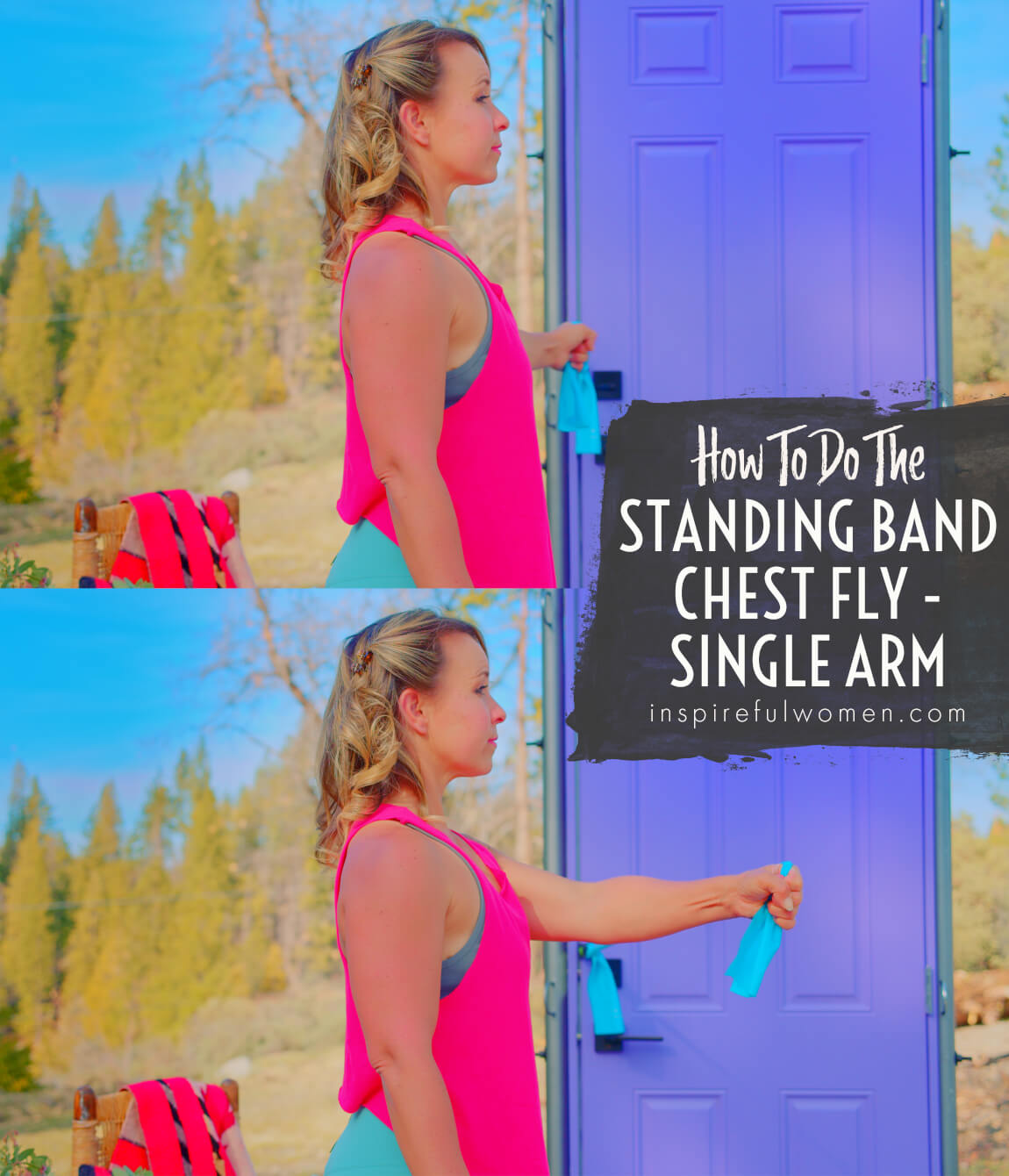
COMMON MISTAKES
COMMON MISTAKES
WHAT TO AVOID WITH THE Single Arm Standing Band Chest Fly
KEY TIP:
Guess what? Good news! Many avoids are the same for most movements. Once you learn the basics, there's really only a few extra avoids for each individual movement.
1. Avoid Rotating Torso
AVOID: Avoid rotating your upper body when you pull the arm in.
WHY NOT?
- This would indicate you are moving through your spine as opposed to through the shoulder joint.
- Repetitive spinal movement under load can cause soft tissue/joint irritation or damage over time. Sometimes people will rotate/turn their torso as opposed to using the chest muscle to pull the arm in.
WHAT TO DO:
- Don’t let the upper body move with the arm.
- Keep the shoulders squared to the front.
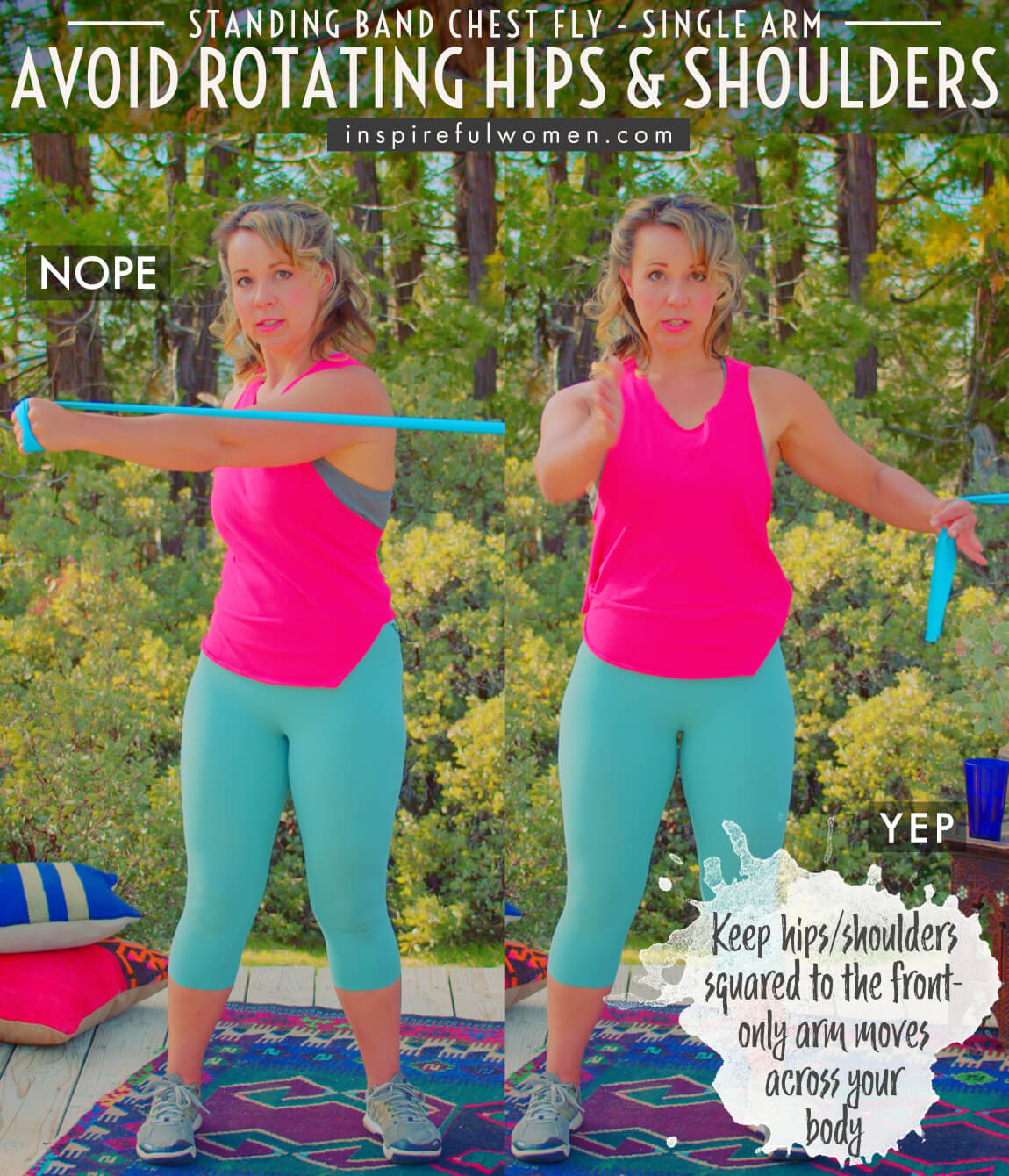
2. Avoid Locked Out Elbow
AVOID: Avoid straightening the elbows.
WHY NOT?
- This puts too much force through the joint and may result in long-term damage over time.
WHAT TO DO:
- Keep the elbows just slightly bent throughout the movement.
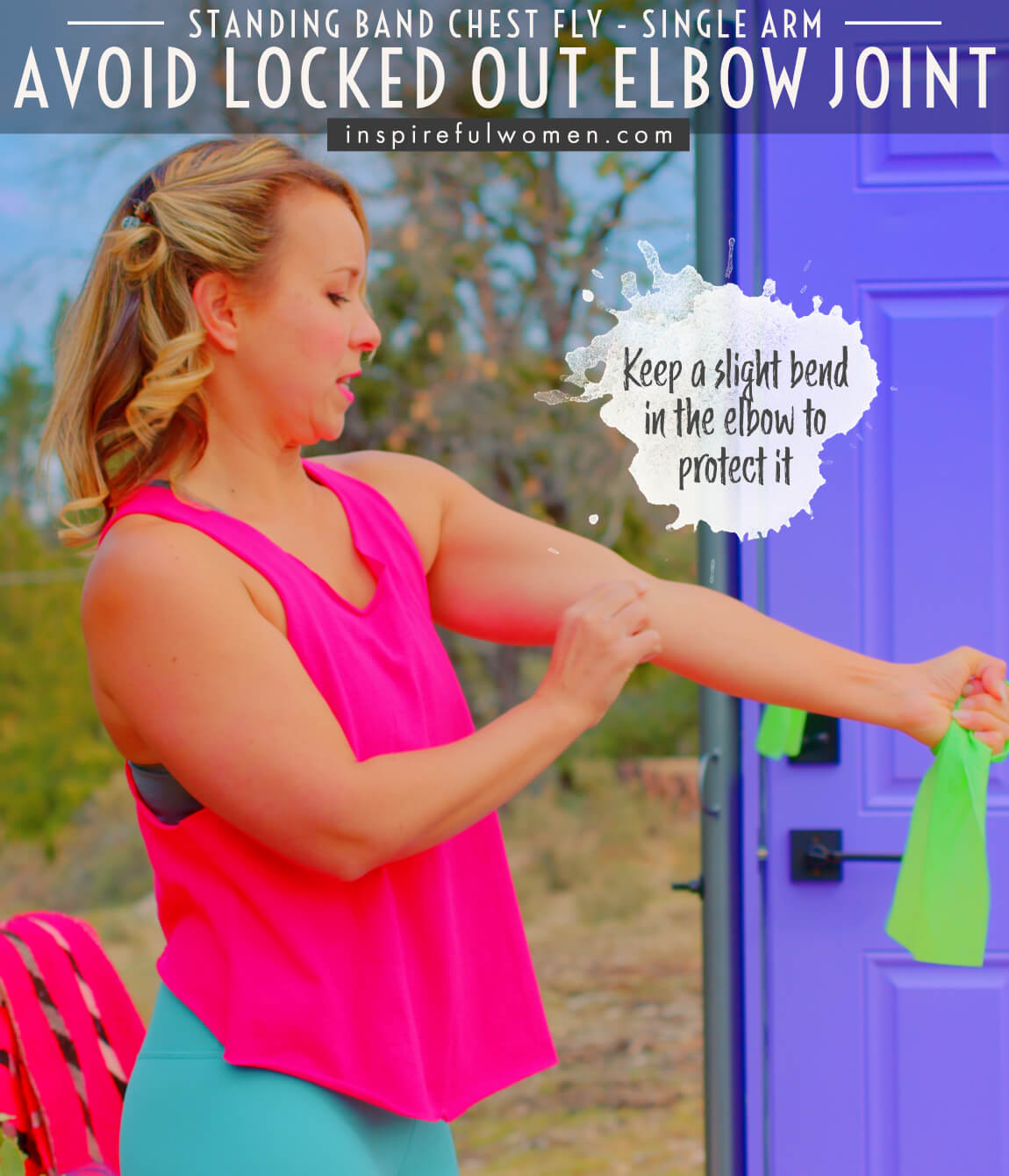
3. Avoid Standing In Front Of Band
AVOID: Avoid letting your arm drift back behind the torso.
WHY NOT?
- This will put too much force on the shoulder joint and too much strain on the pectoralis major muscle.
- This may lead to tears of the joint capsule or the muscle.
WHAT TO DO:
- Keep your hand in line with the shoulder.

4. Avoid Poor Posture
AVOID: Avoid poor posture (slouching or arching the back) or movement through the spine.
WHAT TO DO:
- Maintain a neutral spine position to prevent low back joint injury, muscle strain, or damage over time.
- Keep the sternum lifting
- Keep the shoulders and hips squared throughout the exercise.
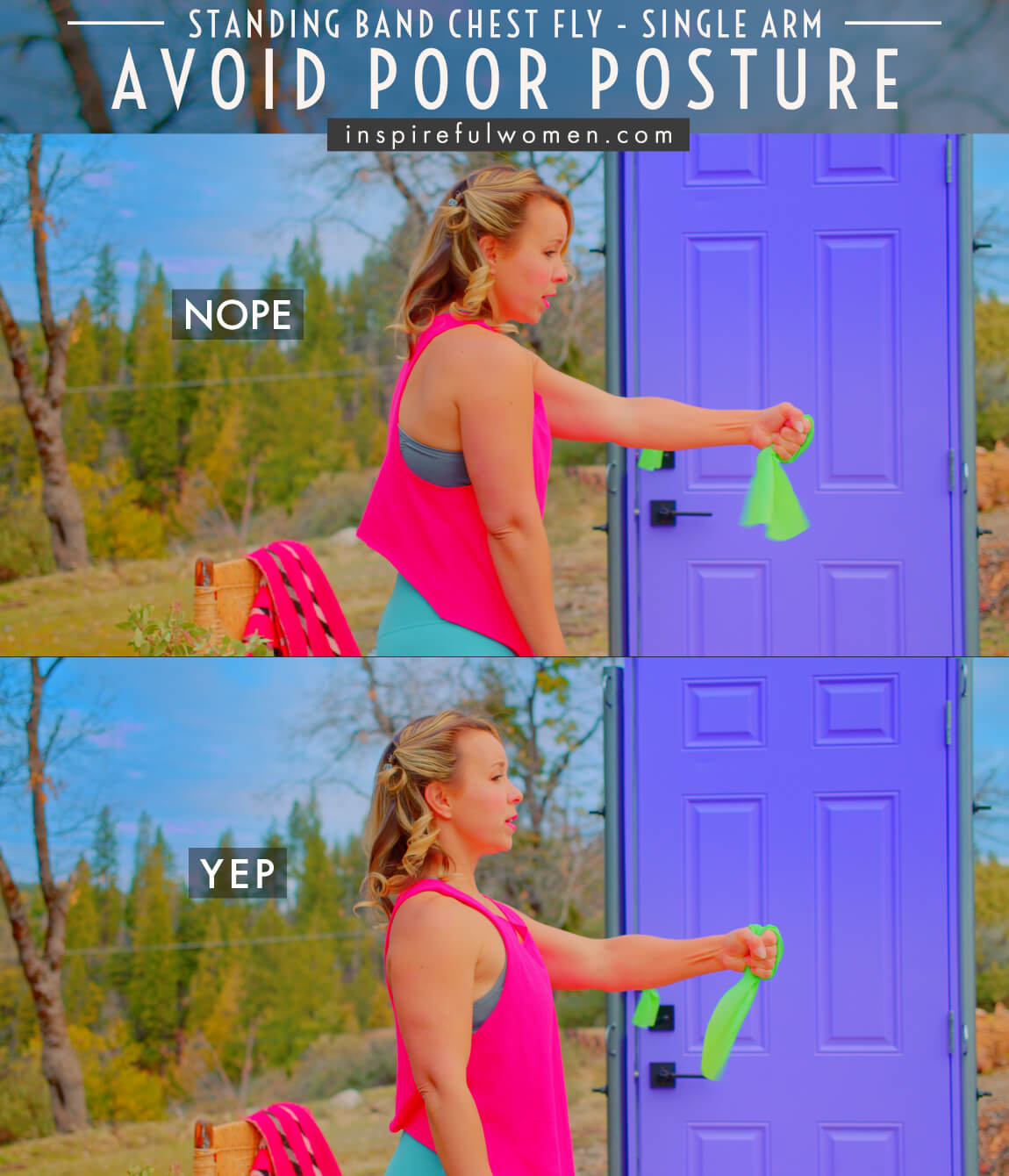
5. Avoid Bending Wrists
AVOID: Avoid bending at your wrists.
WHY NOT?
- Poor alignment (bent forward or backward) or repetitive movement through the wrist can lead to joint and/or soft tissue irritation or injury over time.
WHAT TO DO:
- Your wrists should be in line with your forearm and should be still throughout the exercise.
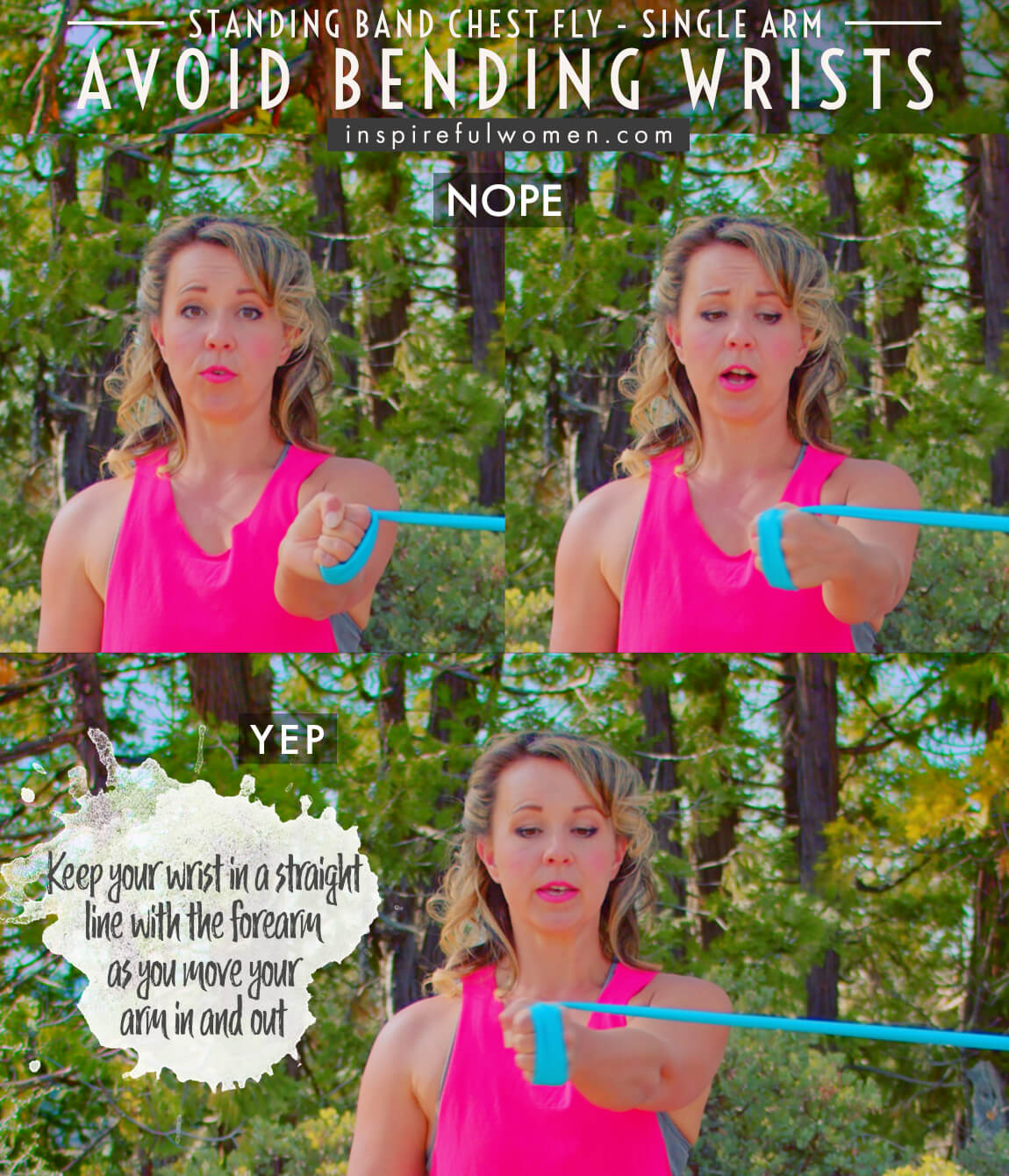
VARIATIONS
VARIATIONS
VARIATIONS OF Single Arm Standing Band Chest Flys
Arm Angles Up
Arm Angles Up
As the arm moves in (adduction) angle the path up so that your hand ends up just above the opposite shoulder. This will activate the upper fibers of the pectoralis major.
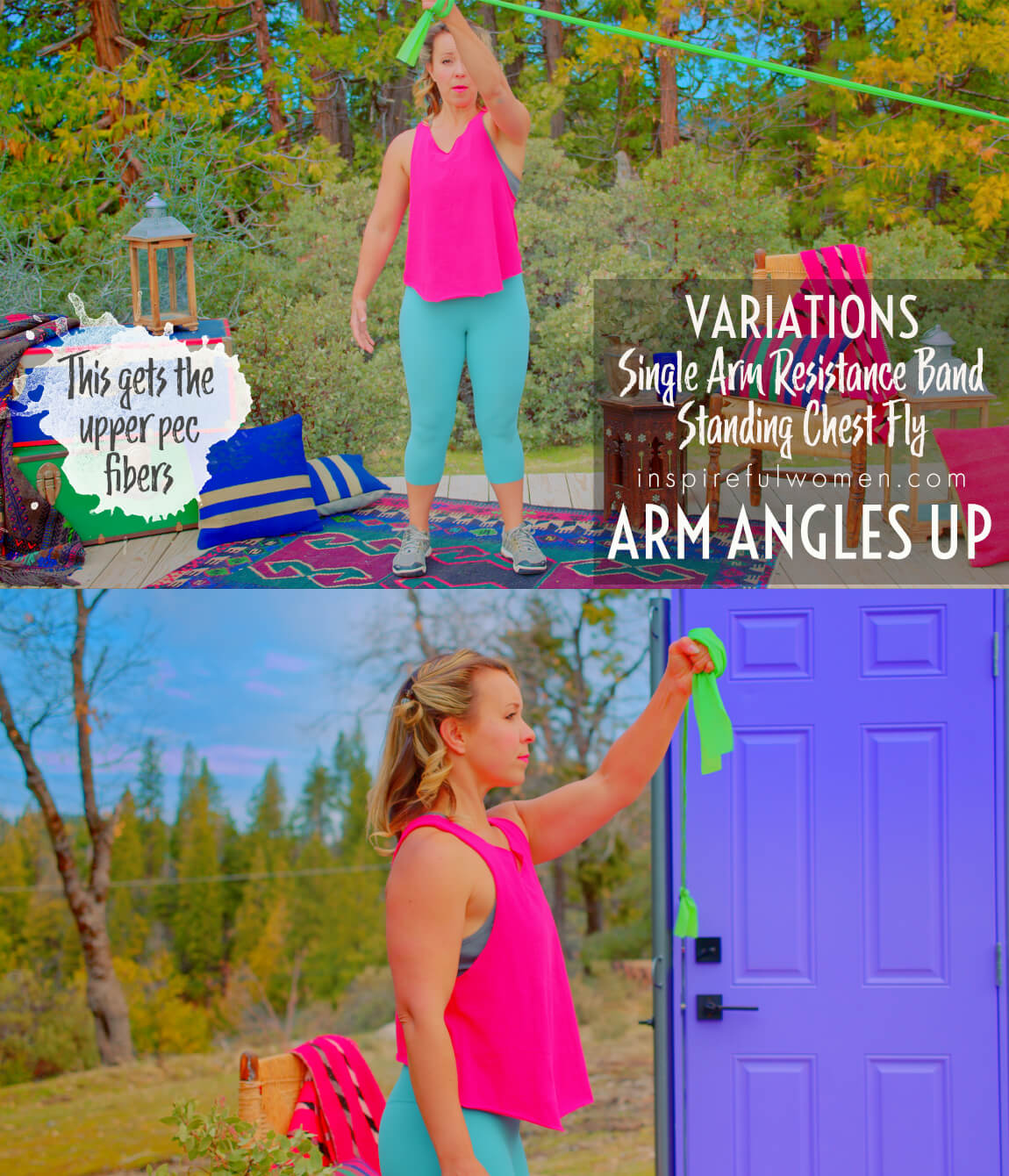
Arm Angles Down
Arm Angles Down
As the arm moves in (adduction) angle the path down towards your opposite hip. This will target the lower fibers of the pectoralis major.
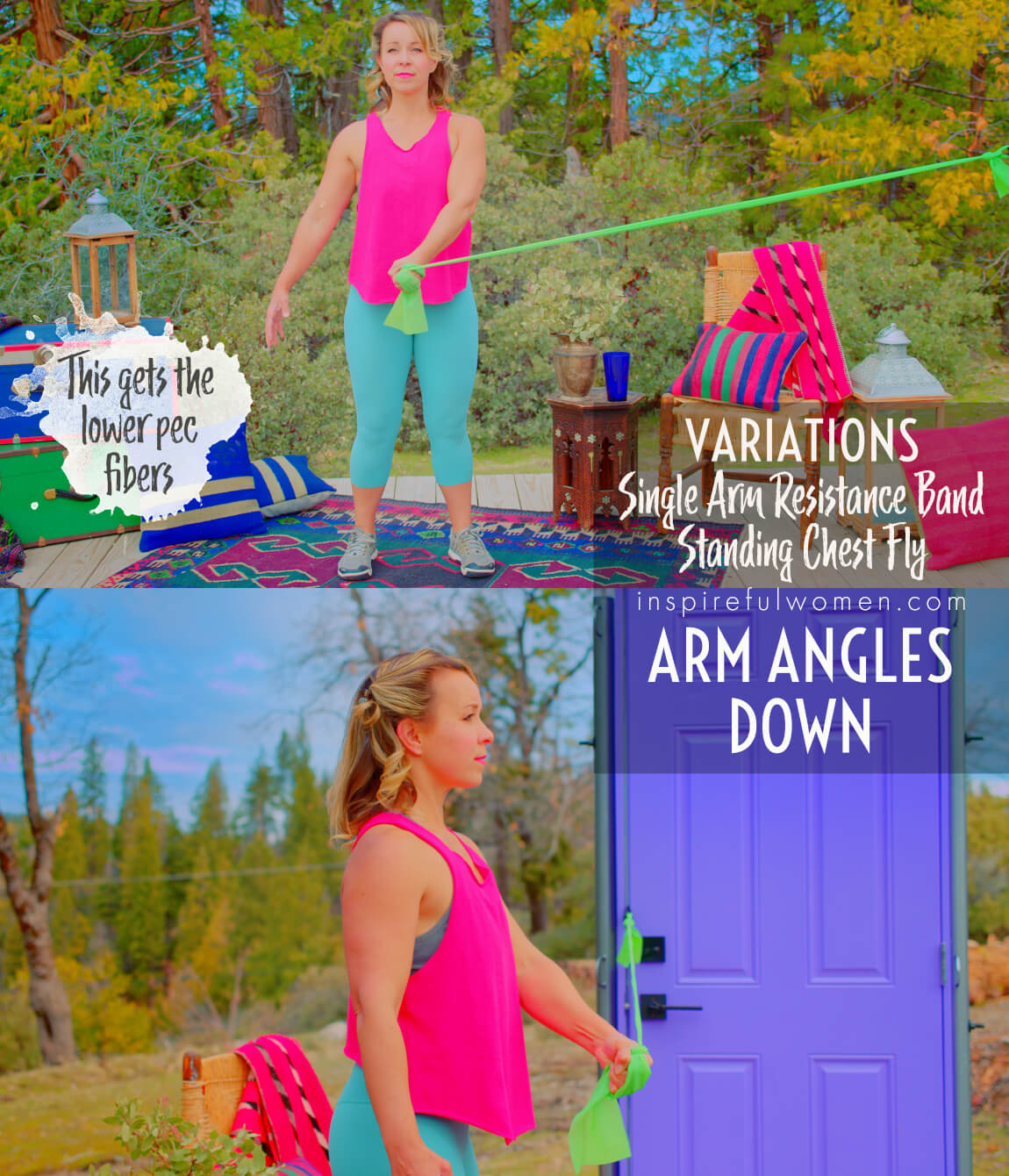
Anchor Band Higher
Anchor Band Higher
Anchor the band higher than your shoulder (head level or slightly higher down to shoulder level works well): as the arm moves in (adduction) angle the path down towards your opposite hip. This will target the lower fibers of the pectoralis major.
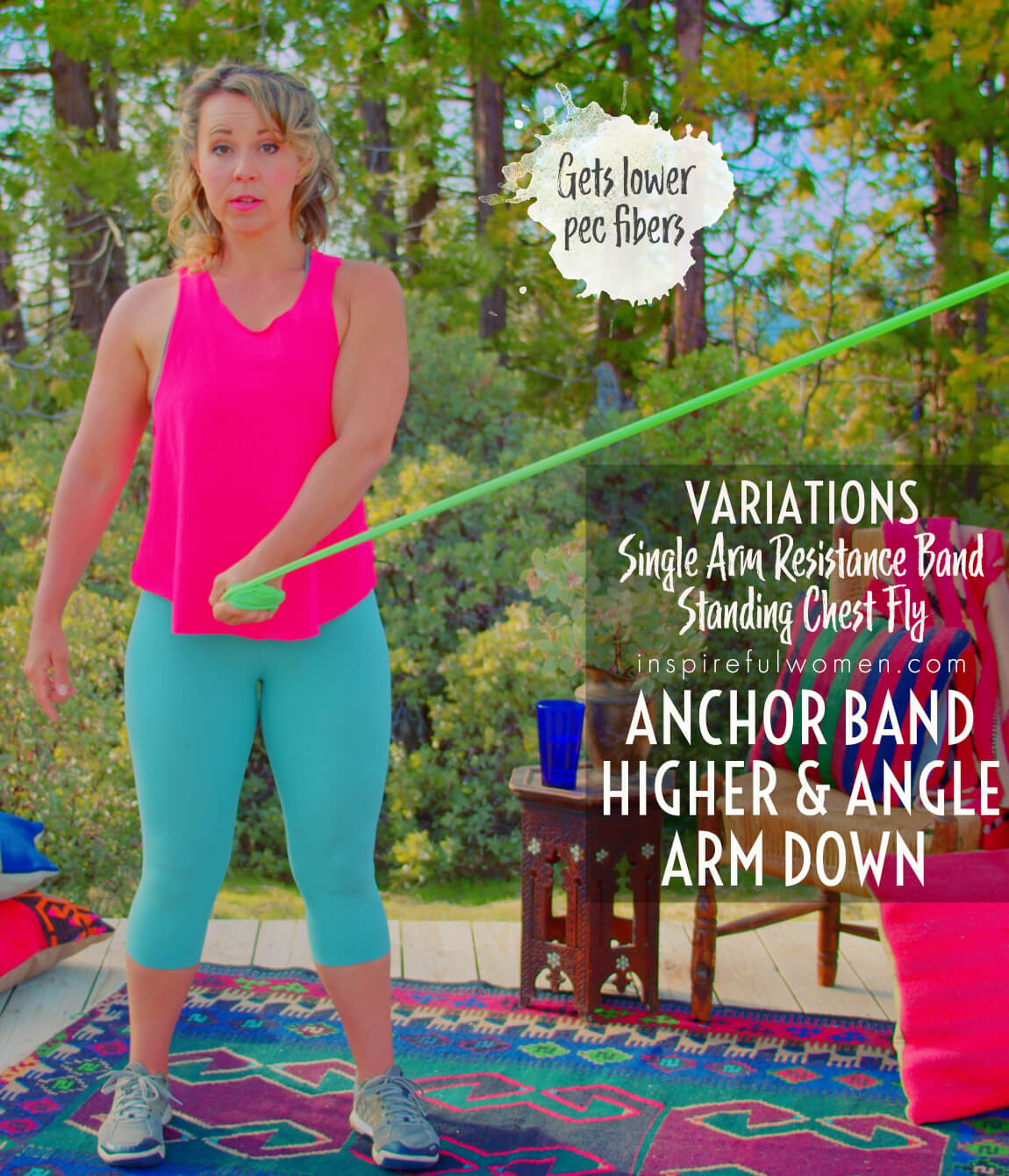
Anchor Band Lower
Anchor Band Lower
Anchor the band lower than chest level (between hips and knees works well): As the arm moves in (adduction) angle the path up so that your hand ends up just above the opposite shoulder. This will activate the upper fibers of the pectoralis major.
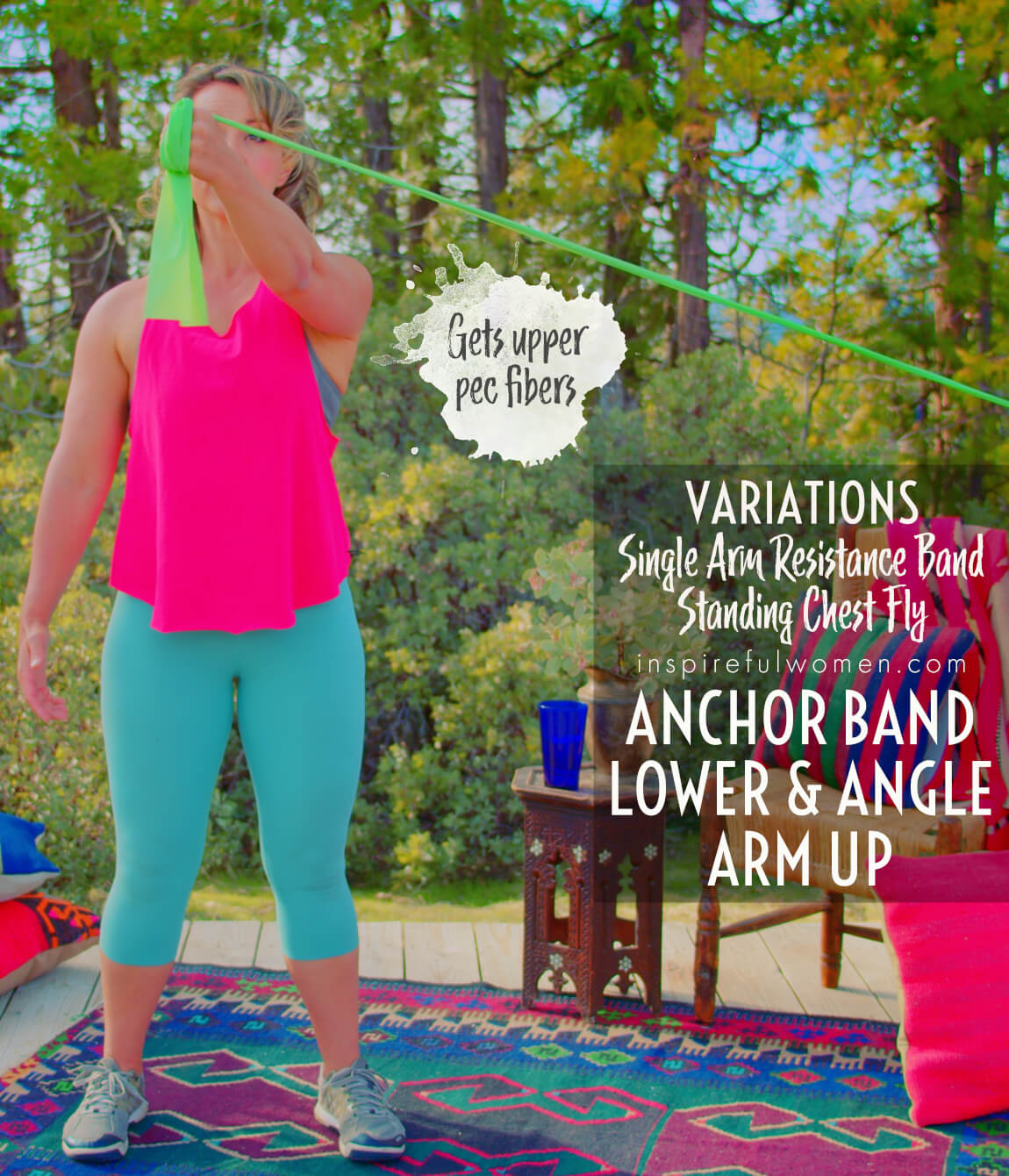
WHAT WE'RE DOING TODAY
WHAT & WHY
BENEFITS OF TRAINING THE Pectoralis major
WHAT
SKIP THE PUSHUPS & DO THIS INSTEAD.
If it’s one thing women hate, it's pushups. Am I right? They are like the ultimate self-esteem killer. If you are feeling out of shape and want to feel really bad about yourself, try doing a pushup. Seriously, who needs that?
Chest flys work our chest muscles without having to do a single pushup. Not only that, your self-image can actually rise instead of a tank as you see yourself capably doing these types of exercises. Pushups have their place, let's be honest, but how about something doing 1 rep of doesn’t just about kill us?
THE AWESOME SAUCE OF DOING BANDED CHEST FLYS (ESCAPING THE HORRIBLE DANGERS OF DUMBBELL CHEST FLYS)
Chest Flys are a popular exercise but if they are done incorrectly they can be tough on the shoulder joints. When you use dumbbells you need to lie down on your back, the arms can get pulled back too far in the beginning position. This can put a lot of strain on the front of the shoulder joint and pull on the chest muscles. This is an exercise that is notorious for ruptures of the chest muscle. The position also allows the head of the upper arm bone (humerus) to glide forward in the socket (on the shoulder blade). This can stretch or tear the front part of the joint capsule - which is a sleeve of connective tissue that runs around the joint and helps to support it. The use of a band helps to eliminate these concerns.
The use of a band for the chest fly is a good option because the resistance of the band lets you challenge the pectoralis muscle in a safer way. At the beginning of the movement, when the shoulders are in a vulnerable position and the pectoralis major is at its weakest, there is the least amount of resistance from the band. As you pull the arms up and the shoulders are in a more stable position, and the pectoralis major gets stronger, the resistance from the band increases. produce force increases. If a dumbbell were used, when the arm is straight out to the side, the lever arm is the longest so the strain on the pectoralis major is the greatest in the position where the pectoralis major is the weakest. As the arm is brought in, the lever arm shortens, and the torque on the shoulder decreases, but the muscle is moving into a position of greater strength.
WHY BOTHER DOING IT?
WHY
WHY DO WE EVEN CARE?
NOT THE MAIN GIG IN OUR WORKOUTS
To be honest, we don’t include a lot of chest-focused work in the Inspireful Women workout program. In general, most women’s chest muscles are strong enough to do their job. More frequently the muscles on the back of the upper body are the ones that need attention. And functionally speaking, we get more benefits from focusing our training a bit more on the backside of our bodies. This seems to help create better balance in our bodies - better posture and healthier shoulder movement, at least this is what I have noticed in my own life. Much of what we do in everyday life tends to use our front side more, so using more of our training time to work our backside can help even things out. On top of that, visually speaking, most of us ladies are not after super-developed pec muscles like the dudes are.
SEEKING BALANCE
Still, strong pectoralis major muscles can help to provide a nice stable base for your arms to work off of. Keeping the muscles that cross the shoulder joint healthy and balanced is important for lifting, pushing, and carrying. Strengthening the biceps and triceps (which we do in the Inspireful Women workouts) without including exercises for the muscles that support and stabilize the shoulder joint can set you up for injury.
STRETCH THE CHEST & MOVE THROUGH THE FULL RANGE OF MOTION
There are not that many exercises that focus on the chest muscles. That could be due to the fact that we do use them a lot in everyday activities, they don’t tend to be weak. But, they do tend to get tight - most likely due to how much we do with our arms in front of us and poor posture. Our everyday life activities tend to keep our arms in a small range, which means we don’t use our joints & muscles through what they can really do.
Something like the band chest fly counteracts this a bit as the band pulls our arm out nice and wide and stretches & elongates the pec muscles. It’s like scratching an itch - it can feel good to move into places our bodies are designed for, but that we don’t do very often in our modern way of life.
Keeping the muscles healthy by including exercises for the pectoralis major that involve taking the arms out to the side - where the muscle is in a lengthened position can help to decrease the tightness or restriction in this muscle.
Pectoralis major also plays a role in breathing. The muscle is spread out across your chest like a fan, attaching to the collar bone, breast bone, and ribs.
EVERYDAY LIFE
EVERYDAY LIFE &
MUSCLE FUNCTION
HOW WE USE OUR pectoralis major IN EVERYDAY LIFE
1. HORIZONTAL ADDUCTION- BRINGING THE ARM TOWARDS THE MIDLINE OF THE BODY
- Enclosing someone in a hug
- Reaching across to fasten a seatbelt
- Putting a belt into pants
- Lifting objects in front of the body
- Carrying heavy objects in front: grocery bag, child
- Picking up your pet chicken 😃
2. UPPER FIBERS BRING THE ARM UP AND ACROSS
- Touching the opposite ear - putting on an earring
- Using a blow dryer on the opposite side of the head as a hand
3. LOWER FIBERS BRING THE ARM DOWN AND ACROSS
- Reaching the opposite hip
4. MEDIAL (INTERNAL) ROTATION OF THE ARM (ROTATING THE UPPER ARM INWARDS)
- Rotating arm down to empty a can
5. CAN ASSIST IN DEPRESSION (MOVE DOWN THE SPINE), DOWNWARD ROTATION, AND PROTRACTION (MOVING FORWARD AROUND THE RIBCAGE, AND STABILIZATION OF THE SHOULDER BLADE AND STABILIZATION OF THE SHOULDER JOINT
- Control during all arm and hand activities that require strength and/or precision - writing, knitting, using a screwdriver
HOW TO FEEL WHAT MUSCLE IS WORKING
How to Feel What Muscle is Working
Place your right hand over your left chest. Straighten your left arm and pull it across your body. You should feel your pectoralis major muscle under your hand. Try pulling the arm across and up - you should feel the muscle activation close to your collarbone. Pull across and down and you should feel the lower part of the muscle contract.
SCIENCY STUFF
SCIENCY STUFF
SPIFFILICIOUS FACTS ABOUT MUSCLES & MOVES
The pectoralis major muscle is a large fan-shaped muscle on the chest. It attaches to the collarbone, sternum (breast bone), the cartilage of the first 6 ribs, and the upper arm.
ALLLL MUSCLES & WHEN
ALL MUSCLES WORKING & WHEN DURING THE Single Arm Standing Band Chest Fly
The muscles of the torso and legs work to hold the body stable. The muscles of the working arm stabilize the wrist, elbow, and shoulder joints.
The pectoralis major is the prime mover, acting concentrically to pull the upper arm inward towards the midline. The coracobrachialis contributes, and possibly the anterior deltoid, depending on how much resistance is being used.
The biceps works to hold the elbow in a slight amount of flexion as the force of the band acts to pull the forearm back (into extension). This will be true for moving the arm in and controlling the out - the biceps is just holding the elbow still.
As the arm is pulled across the quadratus lumborum and obliques will work to hold against the uneven loading on the torso.
The pectoralis major and coracobrachialis work eccentrically to control the return to the starting position.
PIN IT FOR LATER!
